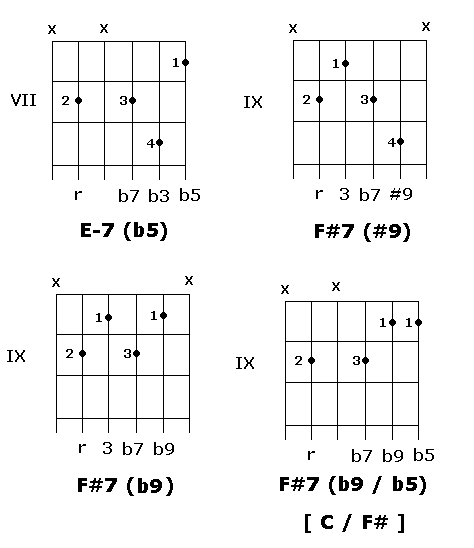 Triads:
i- ii-
bIII+ IV V
vi° vii°
Triads:
i- ii-
bIII+ IV V
vi° vii°
 7th Chords:
i- (maj.7) ii-7
bIII maj.7 (#5) IV7 V7
vi-7 (b5) vii-7 (b5)
7th Chords:
i- (maj.7) ii-7
bIII maj.7 (#5) IV7 V7
vi-7 (b5) vii-7 (b5)
| Note Function: | R | 2 | 3 | 4 | 5 | 6 | 7 | R |
|---|---|---|---|---|---|---|---|---|
| C Major Scale: | C | D | E | F | G | A | B | C |
| Note Function: | R | 2 | b3 | 4 | 5 | 6 | 7 | R |
|---|---|---|---|---|---|---|---|---|
| C Melodic Minor Scale: | C | D | Eb | F | G | A | B | C |
 Triads:
i- ii-
bIII+ IV V
vi° vii°
Triads:
i- ii-
bIII+ IV V
vi° vii°
 7th Chords:
i- (maj.7) ii-7
bIII maj.7 (#5) IV7 V7
vi-7 (b5) vii-7 (b5)
7th Chords:
i- (maj.7) ii-7
bIII maj.7 (#5) IV7 V7
vi-7 (b5) vii-7 (b5)
| Major Scale Triads: |
I | ii- | iii- | IV | V | vi- | vii° |
| Mel. Min. Scale Triads: |
i- | ii- | bIII+ | IV | V | vi° | vii° |
| Major Scale 7th Chords: |
I maj.7 | ii-7 | iii-7 | IV maj.7 | V7 | vi-7 | vii-7(b5) |
| Mel. Min. Scale 7th Chords: |
i- (maj.7) | ii-7 | bIII maj.7 (#5) | IV7 | V7 | vi-7 (b5) | vii-7(b5) |

| Major Scale 7th Chords: |
I maj.7 | ii-7 | iii-7 | IV maj.7 | V7 | vi-7 | vii-7(b5) |
| Mel. Min. Scale 7th Chords: |
i- (maj.7) | ii-7 | bIII maj.7 (#5) | IV7 | V7 | vi-7 (b5) | VII7 alt |











| Note Function: | R | 3 | 5 | b7 |
|---|---|---|---|---|
| E7 chord: | E | G# | B | D |
| Note Function Against E7: | b3 or #9 | b5 or #11 | #5 or b13 | b7 | b9 |
|---|---|---|---|---|---|
| Gm Pentatonic: | G | Bb | C | D | F |